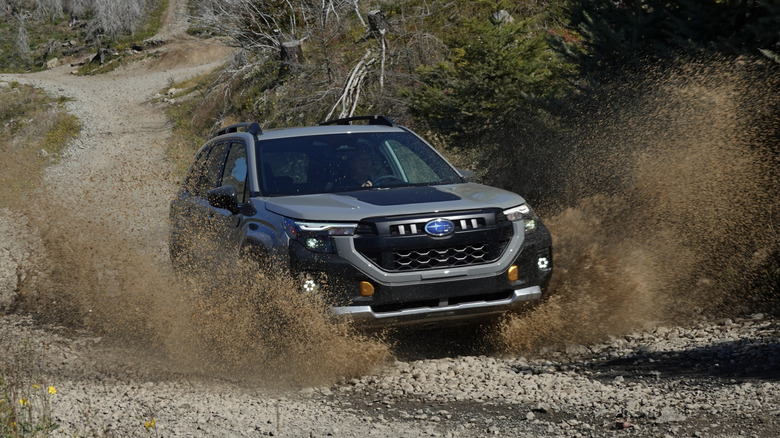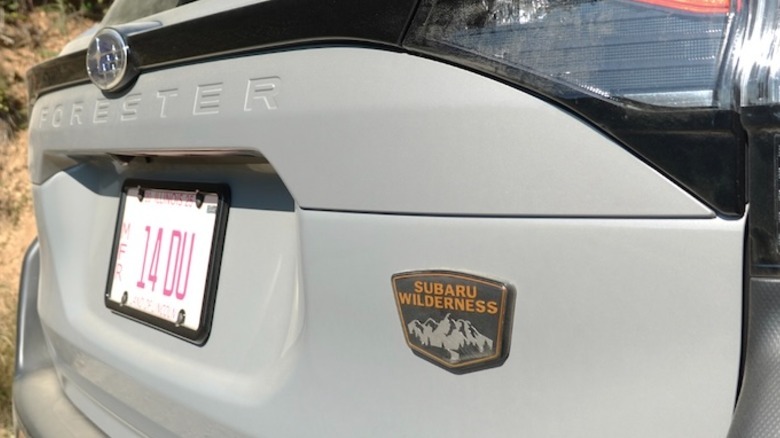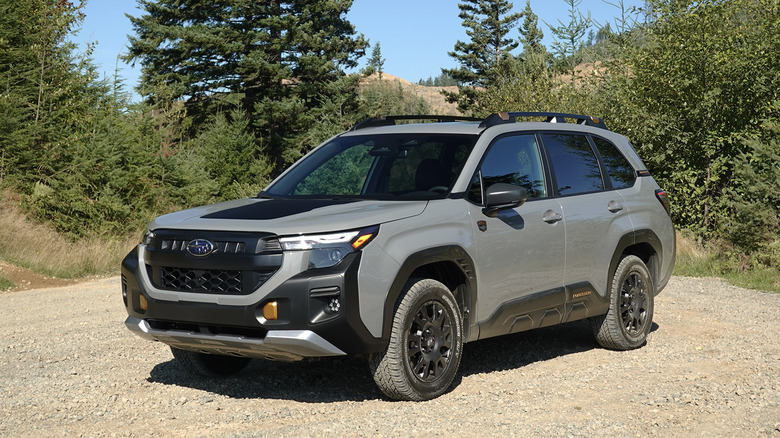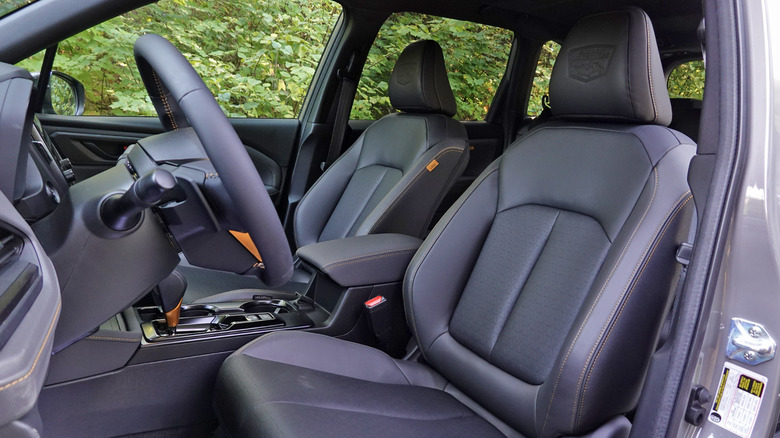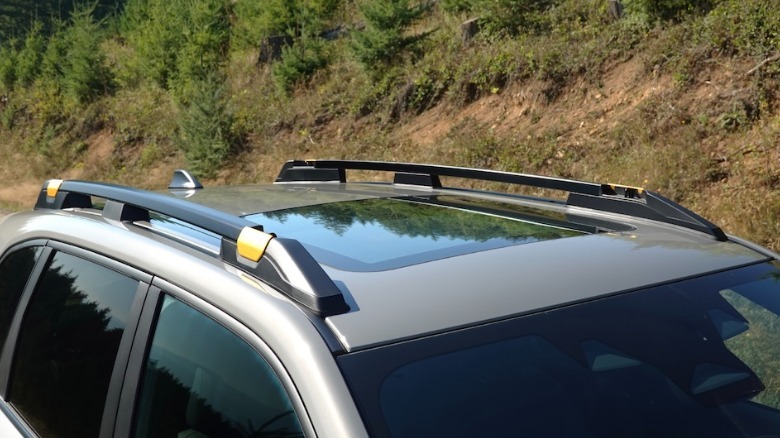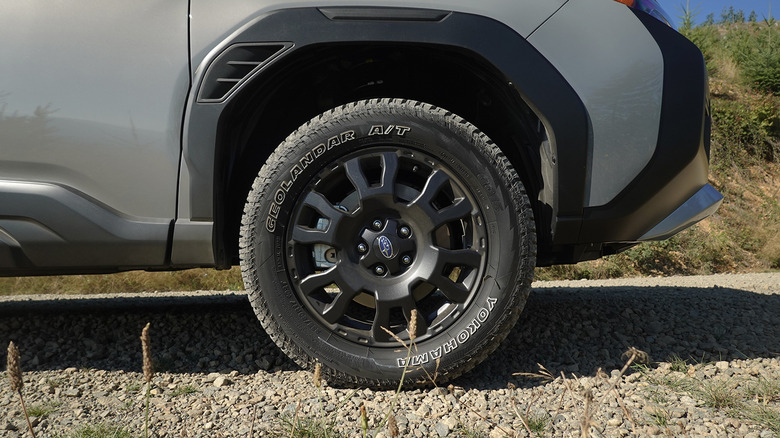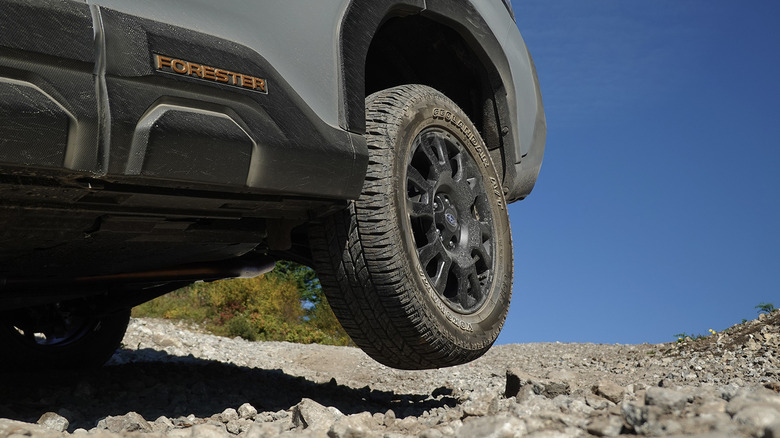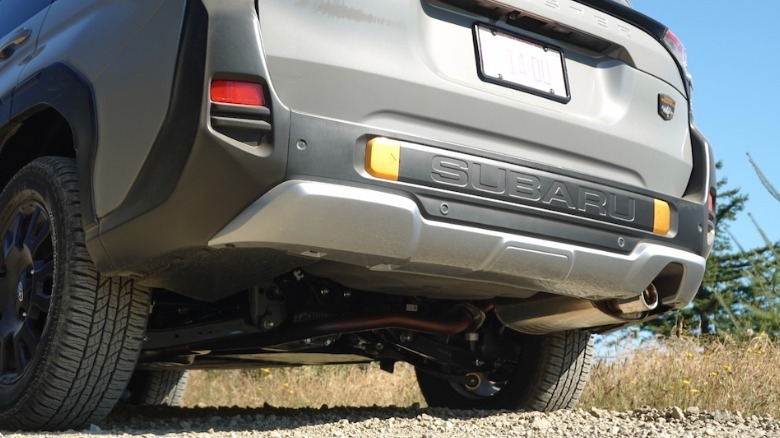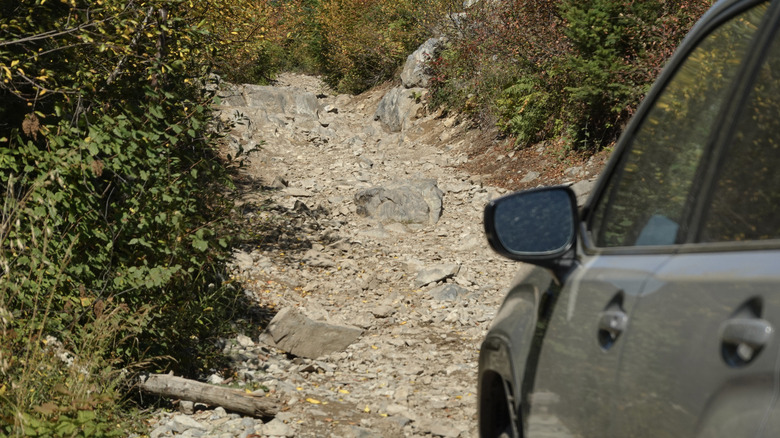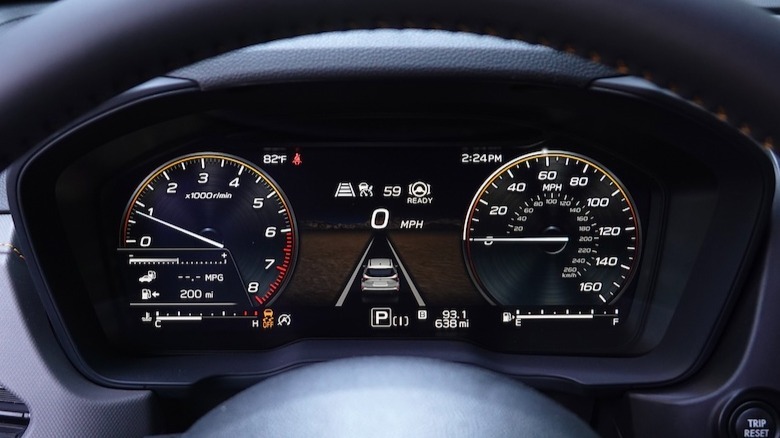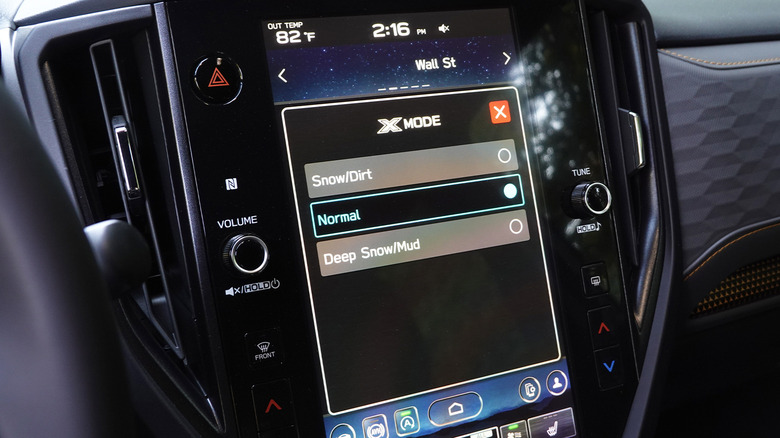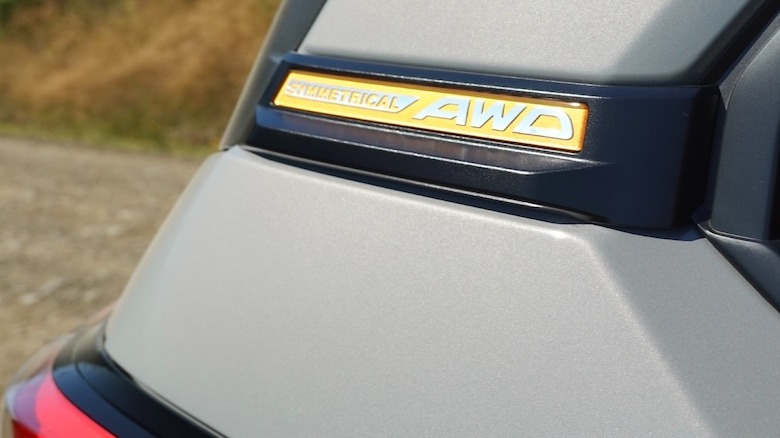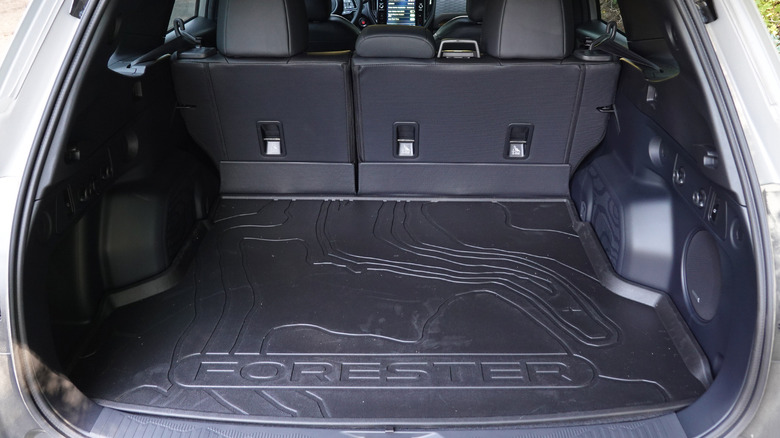One Change Would've Made Subaru's 2026 Forester Wilderness An Insta-Buy
The Pacific Northwest around Portland, Oregon, and Southern Washington might as well go by the nickname "Subaru Country." Throughout the recent media launch of the new Forester Wilderness, I truly lost track of how many other Subaru drivers I spied rubbernecking for the chance to steal a glance at the sixth-gen SUV's off-roady trim package.
The aesthetic definitely helps to turn heads, with all the plastic cladding reminiscent of technical hiking sneakers sold in droves at REI—seemingly mandatory footwear in third-wave coffee shops and antiquarian book purveyors across the Pacific Northwest. Yet in a segment of "soft-roaders" that so often similarly pose as more crunchy than simple appearance packages might suggest, the Forester Wilderness takes the cake as the most prepared for the money.
Two days of driving on gravel roads, rock trails, and winding highways revealed exactly how much the Forester Wilderness walks the walk—or hikes the hike, I suppose—but also a few financial decisions where Subaru still left a little on the table.
Purpose-built for aspirational adventure lifestyles
Personally, I struggle to reconcile Subaru's chunky current design language with the legendary heritage of rally racing competition. But clearly the problem is all mine, there, since sales continue to shoot through the roof, and all the more-so since the original introduction of Wilderness packages back in 2021. Despite letting the aesthetics fall by the wayside, Subaru clearly still delivers a unique combination of capability, reliability, and value that no other automaker on the market can match.
The sixth-generation Forester marks an important step in that regard, because Subaru's team designed the all-new platform with a Wilderness package in mind from the start. Catering more purposefully to customer data suggested by Subaru's internal research only makes sense, if 45.9% of Wilderness buyers truly do take the top-spec vehicles off-road.
Prioritizing the right details that customers care about
Beefing up rigidity by 10%, tuning for quicker center differential lockup, dropping in a new dual-pinion steering rack, and increasing the amount of sound deadening throughout the cabin all comes into play as Subaru attempts to further max out the Forester's best attributes. (Other than adding more plastic cladding, more badging, and more of the soft-roader details that stand out to me as slightly postural.) Some of the performance enhancements make for more of a difference than others: The total ground clearance improves by a scant tenth of an inch to 9.3 inches, the new tires measure 235 millimeters wide versus 225 for the outgoing gen, and the towing capacity increases by 500 pounds to 3,500 total.
All-wheel drive carries over, of course, as does a roomy and functional interior design complete with plenty of easily washed StarTex upholstery and weatherproof floor mats. A bit more static load capacity for the roof rails and an almost full-size spare tire round out the major aspects that set the Wilderness package apart. For the money, at $38,385 to start, the Forester Wilderness sits right in the price range of the Toyota RAV4 Woodland or Honda CR-V TrailSport or Ford Bronco Sport Badlands, but unlike those three more protoypical soft-roaders, at the limit for what a modern crossover can manage without stepping up to a three-row unibody or even a body-on-frame SUV.
Actual real-world capability
Still, don't make the mistake of thinking the Wilderness trim results in much more than a weekend family road tripper or car camper. And this Subaru will still fall well short of satisfying enthusiasts, too, especially because the naturally aspirated 2.5-liter Boxer engine — despite the addition of a shorter final drive ratio — still makes the CVT powertrain an absolute bummer.
At the very least, revised suspension components for the Wilderness get the job done, even if the longer dampers result in slightly less than a planted and refined ride on asphalt. But turn off onto a graded road, as Subaru's navigation prompted me to do a couple hours east of Portland, and the Forester all of a sudden felt right at home. Despite the 9.3 inches of ground clearance, the suspension manages body roll surprisingly well, absorbing bumps and ruts, and erasing all but the worst jarring impacts while hustling along at medium pace.
Doing the work
The tires seemed happier going a little faster, and the Yokohama Geolandar A/T G015 rubber makes for a solid choice especially on rally-style wheels that measure a restrained and rational 17 inches in diameter. Increased tire sidewall works in concert with the suspension, while providing enough grip and durability to gobble up just about anything the rest of the Forester Wilderness engineering can handle. Naturally, I pushed beyond that limit repeatedly in the name of science and fun.
Keep in mind, the Forester still uses independent suspension front and rear, which results in minimal real-world wheel articulation. So even if I never struggled with the hard clunks of full droop or compression, even longer-travel dampers can't compensate for reduced traction once a tire or two starts to lift or lose full contact. As I climbed over bigger rocks and ledges, perhaps trusting the underbody protection and plastic cladding a bit too much, even large hillocks and mounds in Subaru's relatively controlled drive route let me pop a tire up into the air.
Beyond the call of duty
The rears tended to lift more frequently, likely due to the front-mounted flat-four engine, but I also figure airing down a bit from the normal 32 PSI cold (or 35-36 PSI warm) might contribute to a bit more compliance. Still, anytime I landed back on all four tires squared up, the dampers prevented any crashy reverberations or untoward rebound. And throughout, even while playing devil's advocate at the edge of possible articulation, I always felt a comfortable level of confidence in the quintessential Subaru Symmetrical all-wheel-drive.
I do believe the dual-pinion steering helped, communicating enough through to my hands to clearly show where and when I found and lost grip, so that my right foot might better spool up the Boxer engine as the diffs free-wheeled for a microsecond before hooking right up and powering over obstacles. But of course, even on this somewhat comically easy outing, I pushed the Forester Wilderness far beyond the expected call of duty—namely, hauling the fam out to a trailhead or a car camping spot deep in the woods.
Avoid the truly difficult trails
Graded roads more accurately represent the name of the game, and the Wilderness upgrades perfectly match even somewhat jagged washboards no problem. Here, the cladding and skid plate will easily prevent paint chips or mild damage from flinging up pebbles. Though in truth I nose-dove pretty solidly once while trying to get a good pic of water splashing, without leaving any visible marks on the front end.
Trying to push faster and faster on graded roads kind of misses the point, though. All semblance of rally heritage flew out the window a while back—and not just whenever the STI reached the end of the line. No matter how hard I tried, the Forester Wilderness refused to slide under power, even with traction control toggled off. Stabbing at the brakes will prompt a drift, but then only reveal a solid tendency to understeer as the entire chassis moves around the Boxer engine up front.
Why no hybrid Wilderness, you ask?
I fully understand that such shenanigans fit into a Forester buyer's mindset less than not at all. But a few other details stuck in my craw over two days with the new SUV that might matter far more. Namely, that a new generation of Forester deserves the latest tech, but for reasons beyond comprehension, the 2026 model year carries over a familiar and hilariously outdated 11.6-inch Starlink touchscreen with terrible resolution, clunky UI, and laggy responses.
Especially when optioned with the digital gauge cluster, which simply looks so much more modern, crisp, and snappy. And all the worse while using the innate TomTom nav, which frequently glitched out at the worst times while providing directions at turns and highway interchanges.
Hey, at least the new cupholder layout retains a true mechanical gearshift lever. But speaking of tech, the biggest question of all still remains unreconciled: Why can't the Wilderness come with the hybrid powertrain? The naturally aspirated flat-four's ratings of 180 horsepower and 178 lb-ft, when paired to the only available CVT, make no sense for such an upright design. Forget highway overtaking or even accelerating much uphill by redlining all the while. Fake shifts might help to prevent too much drone during normal driving and keep torque delivery somewhat optimized while off-roading, but in nearly any scenario that requires true power, the Forester Wilderness feels almost dangerously anemic.
Go big or go home
This SUV deserves a turbocharger, in the name of Subaru history, but in reality, the hybrid engine available on other Forester trims (and even the Crosstrek now!) makes more sense. Optioning the hybrid on a Crosstrek Limited adds only $2,000 and on the Forester Wilderness, that additional cost would be 1,000% worth the money. Not just for improved fuel economy, either, but for the drastic increase in power and torque throughout the rev range, which improves daily driving, long road trips, and off-roading alike. Then again, Portland drivers regularly struggled to comprehend merging, stopsign right of way, and turn indicators anyway, so maybe more power in this case isn't more better... (Check local insurance rates—this isn't just me and my typical kvetching, either.)
The MSRP of a hybridized Forester Wilderness might seem slightly less competitive on paper, and sure, adding weight while off-roading runs counter to Subaru's efforts to keep the curb weight at a relatively svelte 3,675 pounds. But the naturally aspirated Boxer seems to strain all the time, and never sounds good while doing so—plus I never even loaded up a full family worth of gear in the back or topped up the roof rails, either.
Ready out of the box but also ripe for little upgrades
Even taking into consideration the reprehensible decision to skip a hybrid option (for now, at least!), the Forester Wilderness arrives almost perfectly tailored to the customer. And Subaru plans to build the lineup in Indiana, so hopefully no tariffs will bump the starting sticker up above $40,000. Then, opting to go slightly more trail-ready remains a serious question, even if it almost makes more sense to buy a Forester and see exactly how much bigger a set of tires will fit. To my eye, maybe another inch of diameter and slightly wider will work, though going wider than 235 millimeters might require different wheel offsets.
Subaru declined to comment on such musings when I purposefully asked about aftermarket upgrades, and I realized later that too much more tire diameter will only further exacerbate the lack of torque from an already underpowered engine. Not that anybody in the crunchy PNW crowd seems likely to care, at least judging from the lusty looks my Forester Wilderness attracted everywhere I drove, which only further reinforces the impression of how much better than I Subaru understands this unique customer base.
